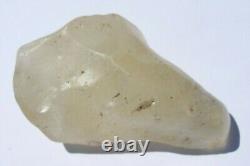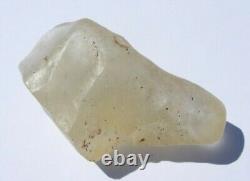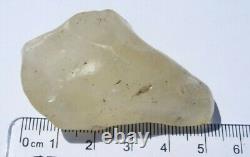31.3 grams Libyan Desert Glass Tektite Meteorite Impact Specimen





Libyan Desert glass, or Great Sand Sea glass is an impactite found in areas in the eastern Sahara, in the deserts of eastern Libya and western Egypt. Fragments of desert glass can be found over areas of tens of square kilometers. Studies show the Libyan desert glass formed about 29 million years ago. The glass is nearly pure silica, which requires temperatures above 1,600? To form, and that is hotter than any igneous rock on Earth.
Ew mineral relics survived from whatever caused the melting. Within the glass are rare occurrences of high-temperature minerals, including a form of quartz called cristobalite. Those are the tiny white dots you see in some pieces. There are also grains of the mineral zircon, although most have reacted to form a higher-temperature mineral called zirconia. The new "smoking gun" for understanding the origin of the Libyan desert glass is evidence of an unusual mineral called reidite.Reidite only forms during a meteorite impact, when atoms in the mineral zircon are forced into a tighter arrangement. I had a conversation with Geoffrey Notkin (world famous meteorite hunter/expert). He told me that scientists cut open some dark pieces and extracted some of the dark material inside. Once tested, they found it to be dust from an ordinary chondrite meteorite.
This is the meteorite that caused the formation of the impact glass! Please take your time and don't pay for up to 2 weeks.

